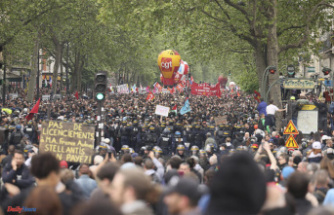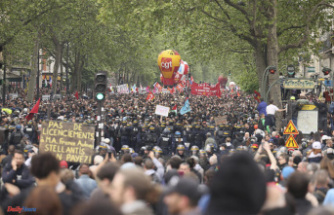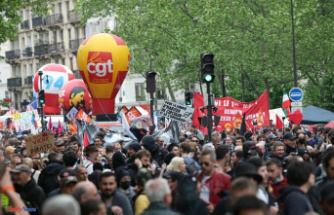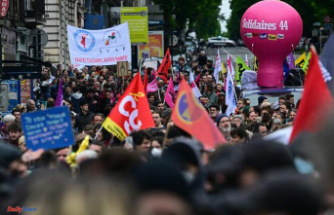The September increase in U.S. consumer prices was 0.4% higher than August's. This is due to the increased costs of new cars and food as well as gas and restaurant meals.
According to the Labor Department, Wednesday's annual consumer price index increase was the same as in June and July. It is the highest level in 13 years. Core inflation increased 0.2% and 4% in September, respectively, excluding volatile food and energy categories. This is compared to a year ago. In June, core prices reached a record high of 4.5% for the first time in three decades.
This year's unexpected surge in inflation reflects higher prices for food, energy, as well as furniture and cars. COVID-19 has slowed U.S. port operations and shut down Asian factories. This has left container ships anchored at sea, and consumers and businesses paying more to get goods that might not arrive for several months.
According to Kathy Bostjancic of Oxford Economics, an economist and consultant, "Price increases due to ongoing supply chain bottlenecks and strong demand will keep inflation at an elevated level, as supply/demand imbalances can only gradually resolve." We agree with the Fed that this is not the beginning of an upward wage-price spiral. However, we expect inflation to stay above 3% until mid-2022.
Inflation data shows that it is more likely than ever that the Fed will begin to reduce its $120 billion per month in bond purchase. This is intended to lower longer-term interest rates. Analysts expect that the Fed will announce this move at its next meeting in November.
The higher prices are outpacing the pay increases that many workers can receive from their employers, who are now having to pay more in order to attract them. The average hourly wage rose by 4.6% in September compared to a year ago, which is a healthy increase but not enough for inflation.
In September, prices declined or moderated in some categories that were initially driven much higher by the pandemic. This was a good sign. These declines prevented core price increases from getting worse.
After a record-breaking summer, prices for used cars fell 0.7% last month.
Last month saw a drop in hotel room, car rental, and airline ticket prices as COVID-19 cases increased. This was due to a reduction in travel plans. After many companies sold off a portion of their rental fleets, car rental prices have risen significantly over the summer. After earlier increases, clothing prices dropped 1.1% in September.
However, new cars are becoming more expensive. The cost of new cars rose 1.3% in September and 8.7% last year. This is the largest 12-month increase in car prices since 1980. Due to a shortage of semiconductors, vehicle production has been hampered and fewer cars are available on dealer lots.
The biggest price increase since 1988 was seen in September for household furniture. Furniture prices have increased 11.2% in the last 12 months, the highest increase since 1951.
Shoes prices rose 0.5% in September, and have increased 6.5% over the past year. Children's shoes have seen a record 11.9% increase, which is a record since the 1950s. Shoes are mostly imported and may be caught in supply shortages.
To attract workers who are difficult to find in the pandemic, restaurant owners are offering higher wages and more expensive food. For the fifth consecutive month, this has resulted in huge price increases of 0.5% in September. In the last year, the cost of a full-service meal has increased by 5.2%. This is an unprecedented jump in as many years as records have been kept.
Last month, gas prices rose 1.2% and have risen more than 42% since a year ago. In September, electricity prices increased 0.8% from August.
The cost of housing also rose strongly as builders claim they can't find the right parts and workers to build new homes in their timeframe. In September, rents increased 0.5% and home prices rose 0.4%. These increases, if they continue, will cause significant upward pressure on the prices as these two measures account almost one-third of CPI.
Inflation has risen, putting pressure on the Federal Reserve. The Federal Reserve has set its benchmark interest rate at almost zero to encourage more borrowing and spending. However, inflation is well above the target of 2%. Chair Jerome Powell repeatedly stated that price gains should "abate", which would bring inflation closer to its target of 2%.
In remarks Tuesday, Fed Vice Chair Richard Clarida shared this view.
He said that the unwelcome rise in inflation this year will be temporary once relative price adjustments have been made and any bottlenecks cleared.
Raphael Bostic was the president of Atlanta Federal Reserve. He joked Tuesday that "transitory", which is now considered the equivalent to a curse word at Atlanta Fed, was made in separate remarks. Bostic stated that price increases are mainly due to the impact of the pandemic on supply chains. He added that they will eventually fade but it will likely take longer time than many Fed officials originally expected.
Price gains are also a weakness for President Joe Biden. He has been accused of inciting inflation by enacting his $1.9 trillion rescue plan in March.
Wednesday The White House stated that it had helped to foster an agreement to keep Port of Los Angeles open 24-hours a day, seven-days a week in an effort to reduce supply bottlenecks, and price pressures.
According to the Marine Exchange of Southern California, 40% of all US shipping containers enter the United States through Los Angeles or Long Beach ports.












